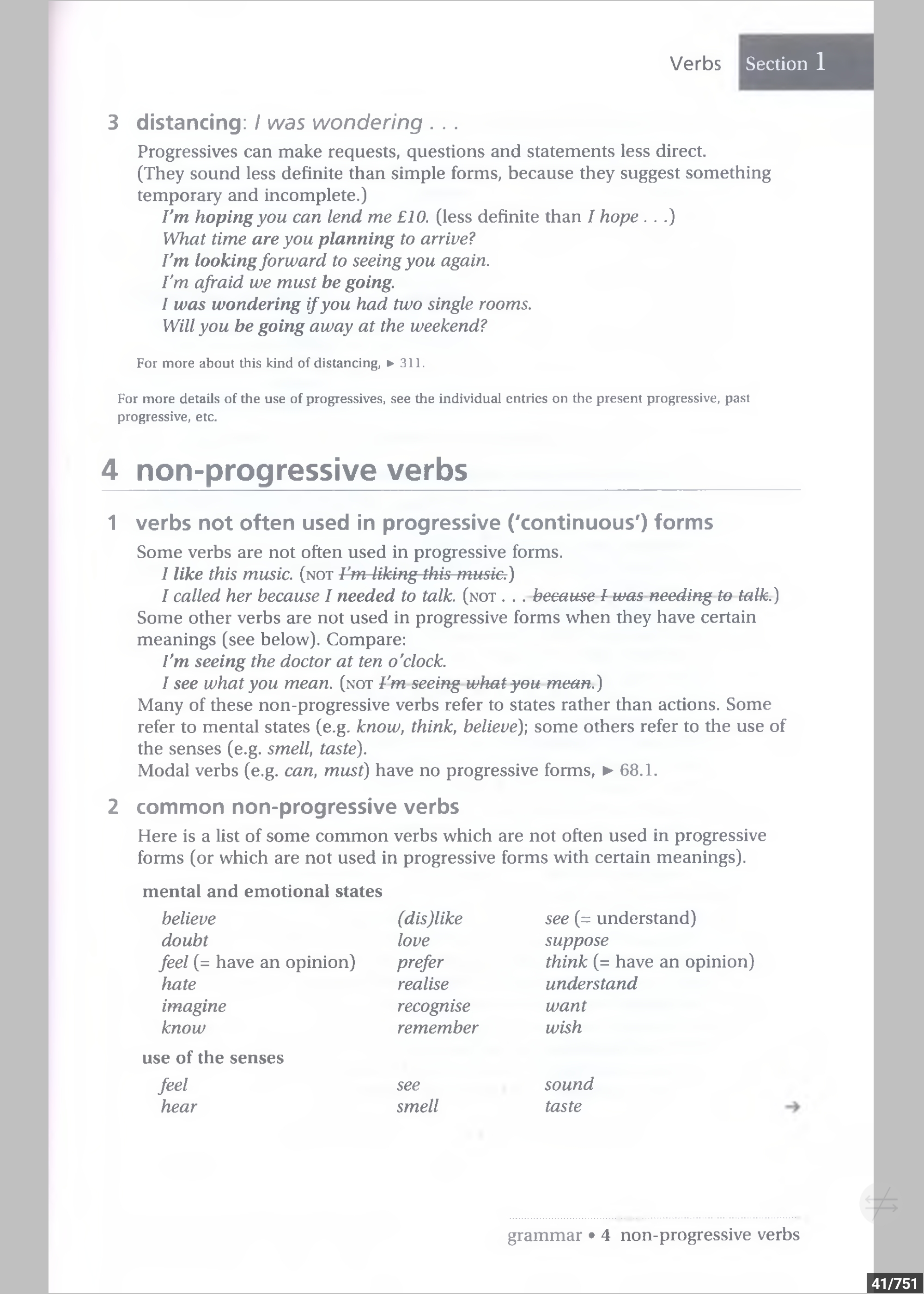
Understand the Problem
The content explains the use of progressive and non-progressive verbs in English, particularly focusing on the verbs that are not commonly used in progressive forms. It outlines examples and categorizes some of these verbs based on mental and emotional states as well as the use of the senses.
Answer
Progressive forms make statements less direct; non-progressive verbs often describe states.
The page discusses the use of progressive and non-progressive verbs. Progressive forms make requests and statements less direct, while non-progressive verbs are often used for states or senses and not actions. It lists verbs that are seldom used in progressive forms.
Answer for screen readers
The page discusses the use of progressive and non-progressive verbs. Progressive forms make requests and statements less direct, while non-progressive verbs are often used for states or senses and not actions. It lists verbs that are seldom used in progressive forms.
More Information
Progressive verbs suggest temporary or incomplete actions, while non-progressive verbs commonly refer to mental states or senses.
AI-generated content may contain errors. Please verify critical information